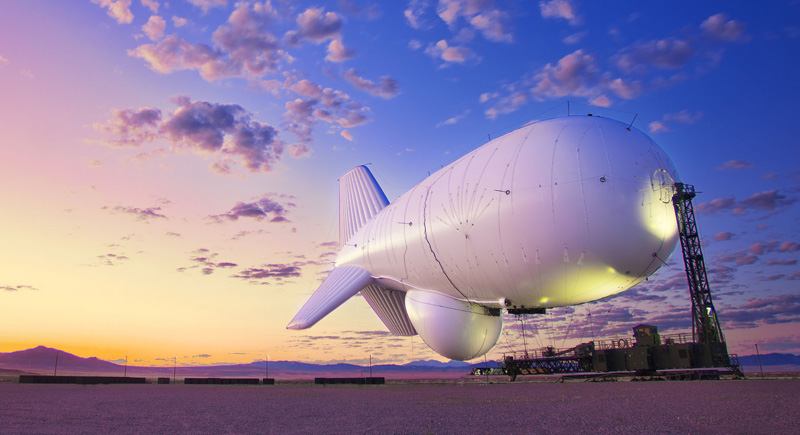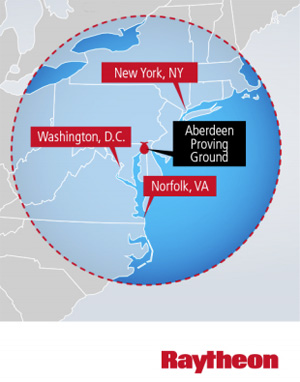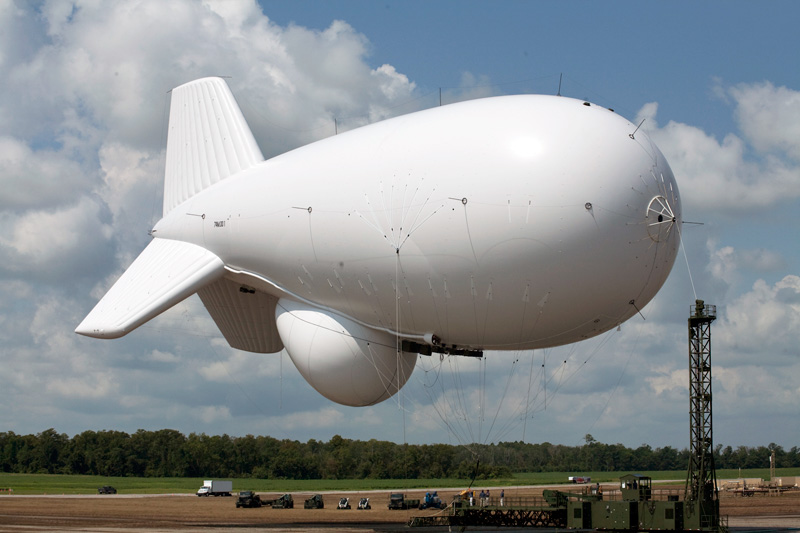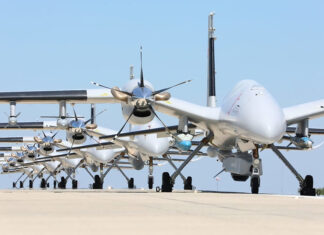

The U.S. Army lofted today the first JLENS – Joint Land Attack Elevated netted Sensor aerostat system at the Aberdeen Proving Ground in Maryland. This large aerostat blimp is equipped with a radar system optimzed to detect low-level targets, such as cruise missiles and drones. It will cover a wide airspace from Virginia, Maryland, and Pennsylvania up to New York and New Jersey.
Similar aerostat-based radars are already operational in India and Israel; Singapore is also planning to deploy such system next year. Deployment in the Continental US (CONUS) followed due to the US military concern about the risk of rough states or terrorist groups potential to attacks the US capital using cruise missiles launched from cargo ships moving deep in the Atlantic Ocean. Such missiles often fly too low to be detected by conventional radar. Airborne radars such as AWACS or Hawkeye aircraft can detect such threats but they are not airborne 24/7, due to the high operating cost of such airborne assets.
The 74 meter helium filled aerostat (243 foot) carries an air-surveillance radar that provides precise location data of airborne targets, such as cruise missiles, aircraft, unmanned aerial vehicles, and large-caliber rockets, as well as maritime surface moving targets. The JLENS system, also referred to as ‘orbit’ consists of two unmanned aerostats with radar systems.
The test is part of a three-year operational evaluation conducted by the North-American Aerospace Defense (NORAD) Command beginning in 2015. The second aerostat of the Aberdeen orbit is scheduled to go aloft in early 2015. Another JLENS system is in strategic reserve, ready to be deployed anywhere in the world at the request of combatant commanders, should they require comprehensive cruise missile defense capability.

The radar equipped JLENS aerostat will fly at an altitude up to 10,000 feet above sea level, giving it a much longer detection range than ground-based radars, providing radar coverage up to 340 miles – an area which includes the National Capital Region (NCR). Input from JLENS will also feed to the 263rd Army Air and Missile Defense Command, to increase decision time in defending the airspace over the NCR. The aerostats will fly 24 hours a day, except in times of severe weather or required maintenance. The system’s ground elements include a mobile mooring station, radar and communications payloads, a processing station, and associated ground support equipment.
Aberdeen Proving Ground was chosen as the exercise location because it provides coverage over the NCR, has sufficient ground area for the two JLENS aerostat sites, and controls its FAA approved restricted airspace, which supports the exercise without interfering with the mid-Atlantic coast air traffic corridors.
Developed by Raytheon, JLENS completed developmental testing in December, 2013 after demonstrating its ability to integrate with defensive systems and help Patriot, AMRAAM, NASAMS and Standard Missile 6 intercept cruise missile targets.
“JLENS is strategically emplaced to help defend Washington D.C. and a Texas-sized portion of the East Coast from cruise missiles, drones and hostile aircraft,” said Dave Gulla, vice president of Raytheon Integrated Defense Systems’ Global Integrated Sensors business. “JLENS can detect potential threats at extremely long ranges, giving North American Aerospace Defense Command more time to make decisions and more space to react appropriately. Once the system becomes operational it will be operated by soldiers of the U.S. Army’s A Battery, 3rd Air Defense Artillery.
The data collected during the operational exercise will be used to assess JLENS capabilities and its integration into the existing homeland defense architecture. This will enable senior defense officials to support a determination whether to transition JLENS capabilities to an enduring mission at the conclusion of the three-year operational exercise.




















